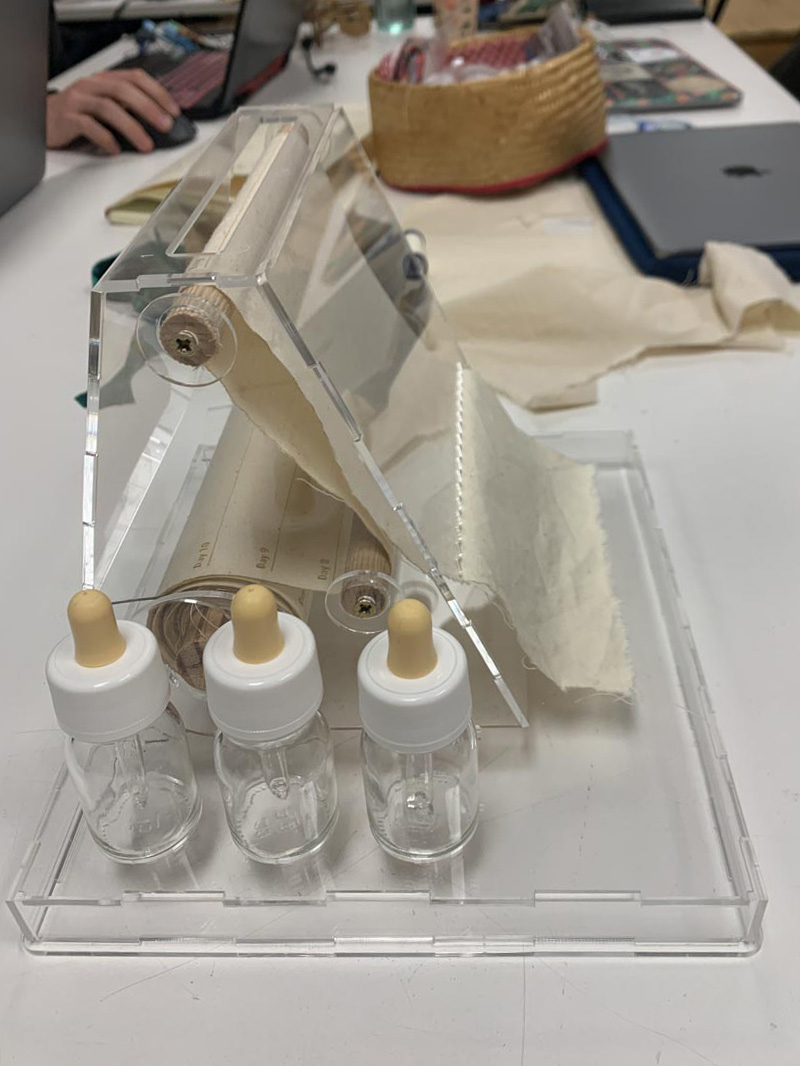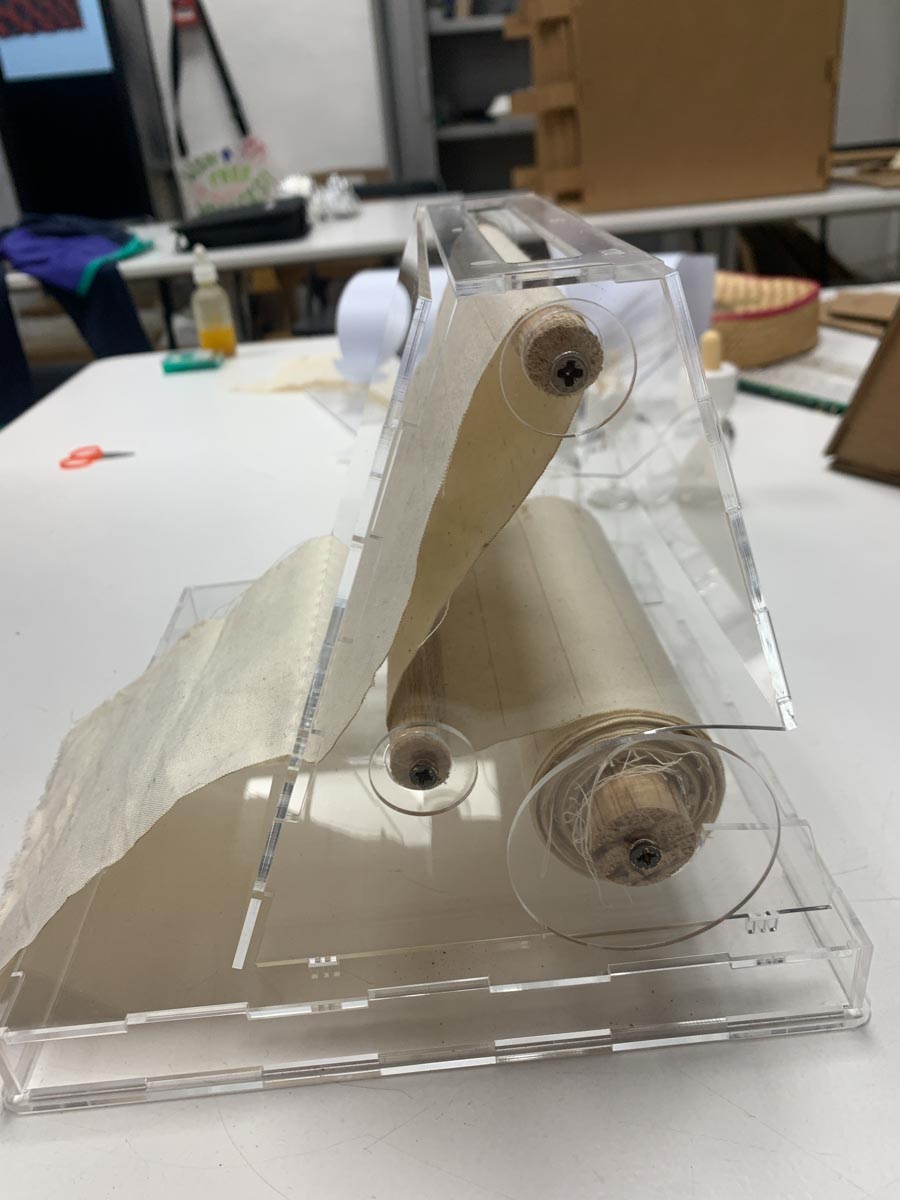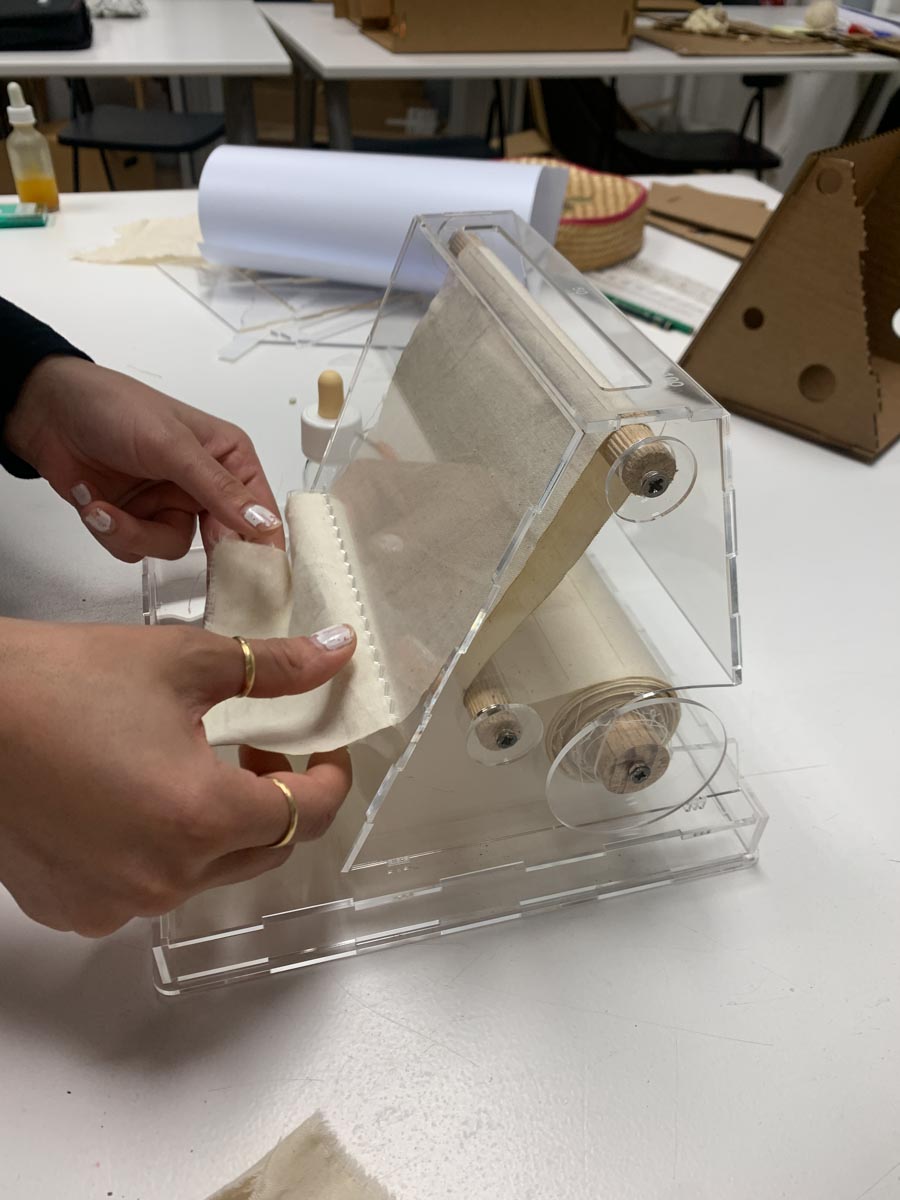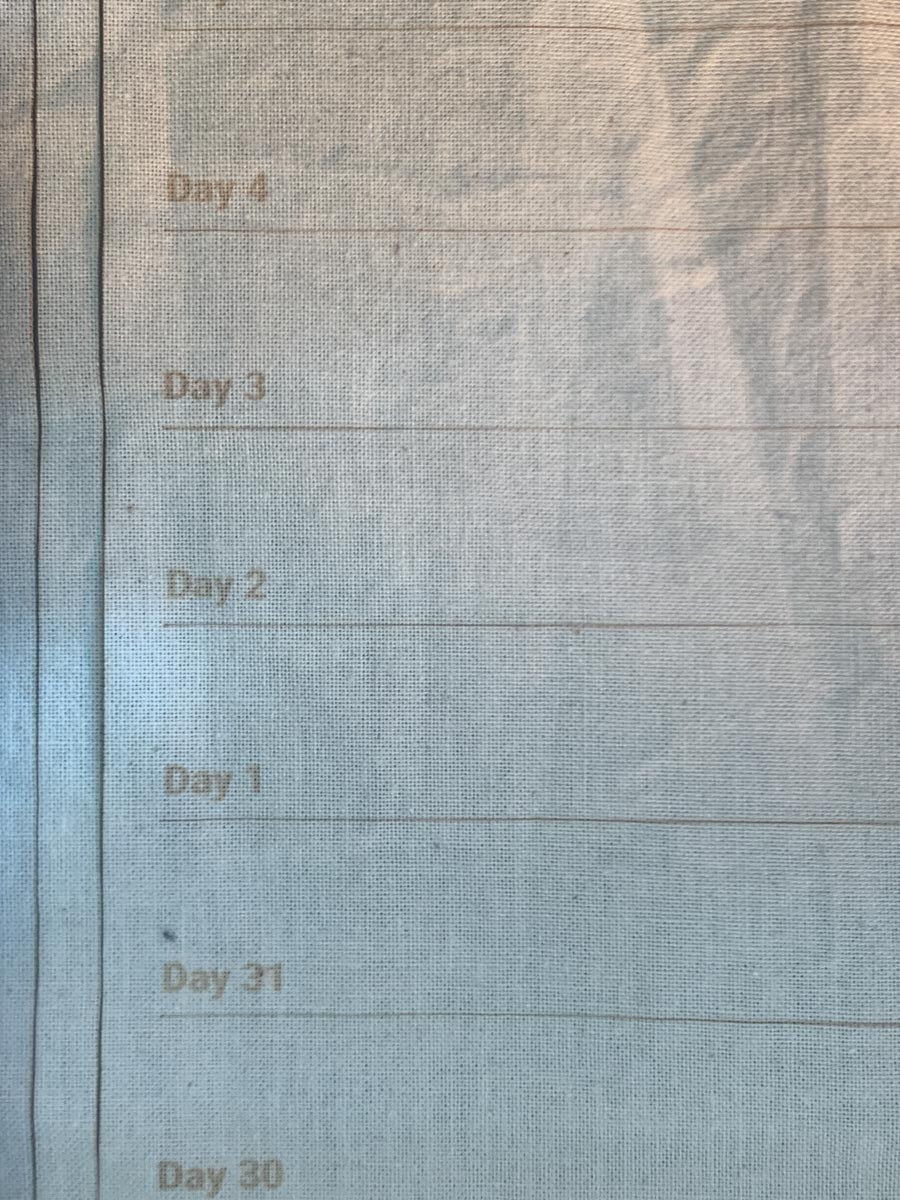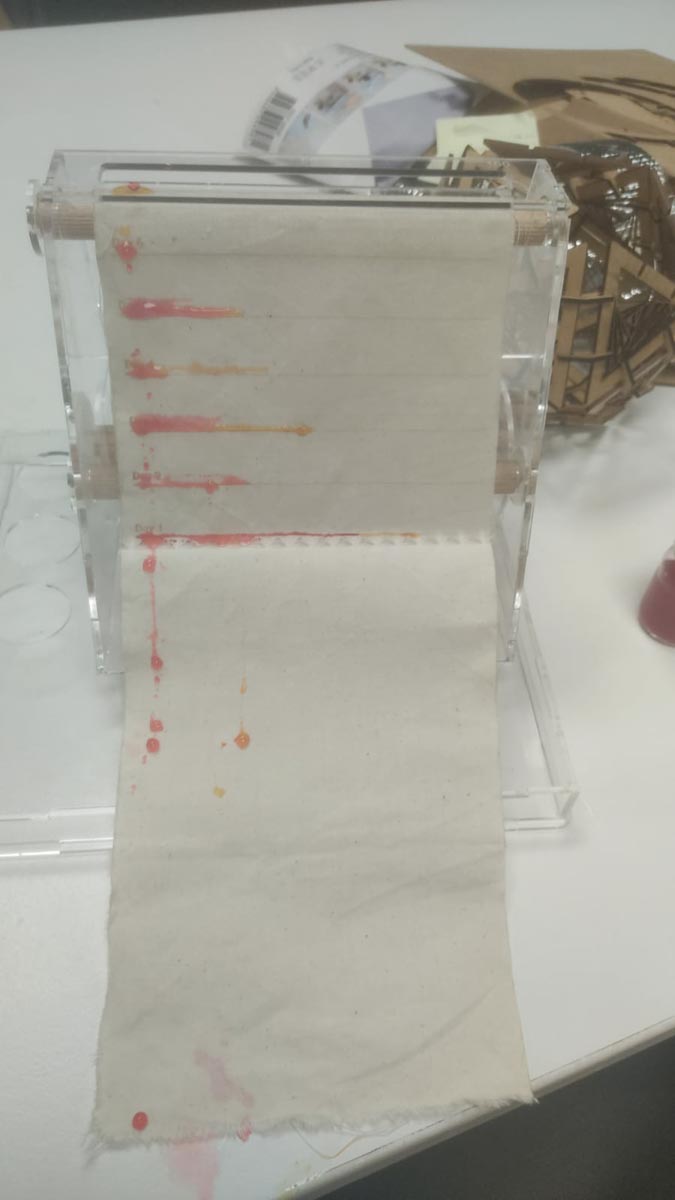Micro challenges are aimed to be an intense week project where we incorporate all the knowledge acquired during the previous weeks. In this case, we used laser-cutting, engraving and learning how to use GitHub to create a repository as well as understanding how to export files for web in order to better optimise resources.
Analogue data printing for alive wearables
For this first challenge, I decided to team up with Andrea and Aparna. It wasn’t something planned ahead but since we worked really well together during the almost useless machine project I thought we would form a good team. At first, it was a bit difficult to find a common ground between our interests but for me, this approach is adding more value to the project rather than working with people that have too similar interests.
We are all thrilled by the idea of creating alive wearables. Our common interests reside in wear data, using aesthetics to tell narratives, grow your own data, art as a provocative tool to understand connection.
After a lot of discussions, we decide to create an artefact that will be used to print our data in an analogue way.
Redefining what does it mean to have an alive material, What if by alive we mean changing material?
Representing our digital data into analogue data printing with a dropper on a fabric. The drops with different colours are absorbed by the fabric creating random prints that are in continuous change by adding the different colours.
We created a laser-cut structure to hold a mechanism formed by rolls to hold the fabric and make some tension points that allow us to pull the fabric as a printer. The laser-cut teeth on the front part create enough friction to grip the fabric.
We are planning to use different pigments and data resources to generate different prints and make a shirt overlapping the different pieces.
My contribution to the group resides on different tasks, from developing the concept, organising the steps that we should take, helping on the design process of the mechanism, setting up the git hub repository, designing the fabric and laser cutting it plus collectively communicating our ideas to improve the design, being present in all the steps of the fabrication process.
About the learning process, I would like to highlight some important points. We spent a lot of time defining the concept and how to better represent our idea, that for me is a crucial time worthy to spent to have coherence in the design outcome. We learned a lot from interacting with each other as well as how to better cut the acrylic material, which is very fragile, to implement new knowledge about designing joints. Realising that the material we use is gonna affect directly on the design. I can say that I now feel way more confident using the laser cutter and rhino for this process. I also really like to learn how to set the parameters to laser cut a material that wasn't on the materials board, like the fabric. Using markdown for documenting was also new for us and turned out to be very convenient to all of us editing.
Micro challenge repository

